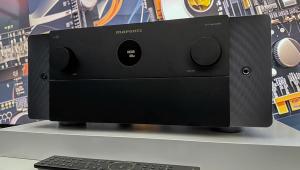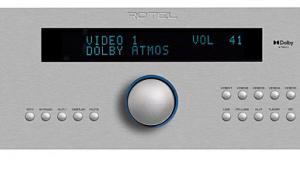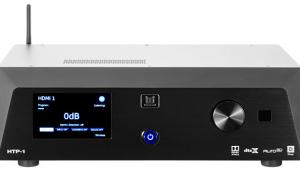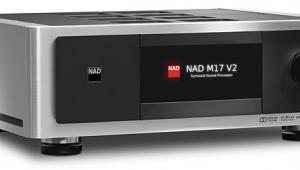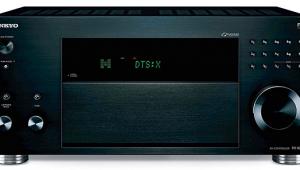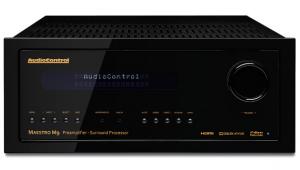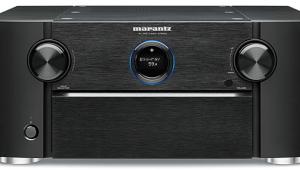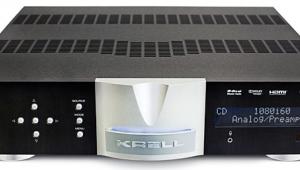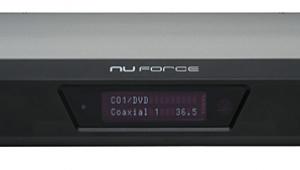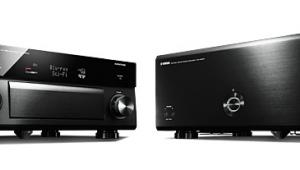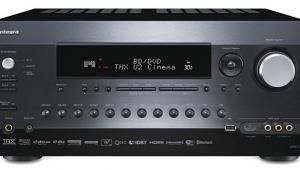Krell Foundation Surround Processor Test Bench
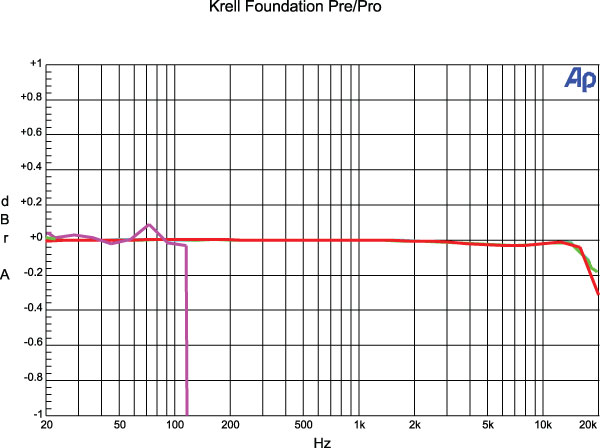
The above chart shows the frequency response at the preamp outputs of the Dolby Digital decoder. Left (aqua): –0.00 dB @ 20 Hz, –0.17 dB @ 20 kHz. Center (green): +0.01 dB @ 20 Hz, –0.19 dB @ 20 kHz. Left surround (red): –0.00 dB @ 20 Hz, –0.31 dB @ 20 kHz. LFE (purple): Normalized to the level @ 40 Hz: +0.02 dB @ 20 Hz, upper –3 dB @ 118 Hz, upper –6 dB @ 121 Hz.
Analog frequency response in Preamp mode:
–0.05 dB @ 10 Hz
–0.01 dB @ 20 Hz
–0.00 dB @ 20 kHz
–0.03 dB @ 50 kHz
Analog frequency response with signal processing:
–0.66 dB @ 10 Hz
–0.19 dB @ 20 Hz
–0.13 dB @ 20 kHz
–58.61 dB @ 50 kHz
There was no multichannel input to measure. The analog THD+N was less than 0.009% at 1 kHz with a 100-millivolt input and the volume control set to 106. Crosstalk with a 100-mV input was –100.61 dB left to right and –99.44 dB right to left. The signal-to-noise ratio with “A” weighting was –128.33 dBrA.—MJP

Video: The Krell performs no upconversion but only does a direct HDMI video passthrough. However, in doing so, we first discovered it was clipping any information that sits below video black or above video white, information that may be encoded in the footroom and headroom provided in the digital video standard. Clipping below black makes it more difficult to set the Brightness (black level) control. Clipping above white is more serious, as it can crush the extreme whites (such as detail in brightly lit snow or clouds, depending on how the source has been transferred). Krell responded with a series of firmware updates that we confirmed had fully corrected the issue for both YCbCr and RGB signal types and allowed us to issue a perfect score for video. Users in the field should be sure to update their firmware to version V1.15 Jan 16, 2014 or later for optimal video performance.—TJN
- Log in or register to post comments


Thank you for the article. I am intrigued particularly by your mention of the Cary 11. I've been considering the Cary Cinema 12 because it to seems to have superior sound quality, so I'm wondering how this Krell and the Cinema 12 would compare for sound quality.
With my current receiver, whose name will remain unwritten, I have to use the Oppo's analog out in 2 or 5.1 to get higher audio resolution.
The Oppo uses Sabre 32 Dacs and plays DSD 2 and 5.1 and if I'm reading the manual correctly (I just got it and am still in the new and explore stage) I have to use the analog out to get full audio resolution.
Would this Krell be fully compatible with the Oppo? Is it fair to ask you for a sound quality comparison with Marantz 8801 and Mac 121?
I'm interested in vinyl play back too!
It isn't easy, as a customer, to find these brands within a reasonable driving distance. Even when you do find them the rooms are set up so differently! I was recently in an audition room that seemed to totally deaden the audio, rolling off highs and lows creating an environment that to my ear didn't sound natural at all! The next listening room had little or no sound treatment. Wow what a contrast that was.
Thanks for any more info you can give.

The Krell does not incorporate a 5.1 channel input so for surround DSD you'd be out of luck unless you've misread the Oppo manual and its HDMI connection can output DSD (I do not know if that's possible) but you can run DSD two-channel into the Krell. As good as is the Marantz, the Krell is in a different league. Since the Mac 121 was reviewed as a complete system a comparison is impossible. That's about all I can say but I suspect the lack of 5.1 channel analog inputs will be a deal breaker for you. As for a Cary 12 comparison I can only compare to the Cary Cinema 11 and it was here a long time ago. It is certainly in the same "ball park" as the Krell but beyond that I can't say anything with certainly.

"You can run DSD decoded analog into the Krell, not DSD.

If you MUST have sources/integration/streaming like Spotify, Pandora, AirPlay, et al.... just patch-in an AVR for those features. If you are buying this pre/pro, you probably have the space and budget for seamless integration.
The point? When not using those sub-par formats, you get awesome audo and HT from the Krell and you can cheaply upgrade when new features arrive.
I bet, however, that a buyer pursuing this level of audio performance, has a dedicated HT and doesn't need those sources in that room. Perhaps they get them from distributed audio in other rooms?

Mr Fremer,
After re-reading your article I see you actually anticipated my questions about commercial brands such as Marantz and Macintosh, and I've answered my own question about Oppo compatibility.
I fully agree about redundant features. How many different pieces do I need that connect to Pandora and Netflix? Isn't the connectivity of apple tv, the panasonic tv, and the oppo blue ray player enough? None seem to have MOG:-(
Still, since this Krell combined with the matching Amp are too expensive for my budget, I am wondering about how the very well reviewed, on this website, Cary Cinema 12 stacks up to this piece.
Is there an amp less expensive then the Krell 7200 that would work well with this piece?
After reading your review I can't wait to hear the Foundation personally. Tomorrow I hope! If it sounds as spectacular as you indicated my wife may kick me out of the house...

My listening was with a Parasound Halo A51 that you can get for around $4500. The Krell 7200 may be better (or not!) but the combo I reviewed is missed here every day. Well I have the amp….

Mr. Fremer, Thank you for your comments about the Krell Foundation, Cary 12 etc:
Thought you’d be interested in Krell’s response to my question about DSD:
Thanks for your communication and also for your interest in the Krell Foundation preamp/processor. At some point later on this year, most likely coinciding with the implementation of 4K in the Foundation, the Foundation will also get the ability to decode a DSD signal via HDMI. We do not have an exact time line for when this will occur but it is something that we are working on right now.

Hey. Anyone have any suggestions as to the best cables to use for the krell pre-pro setup? I'm looking for best performance on the upper-end price point (not the super budget or budget cables, but not cost is no object either). Also, it would be great if you added a top picks for cables to go along with the a/v equipment. Thank you.
